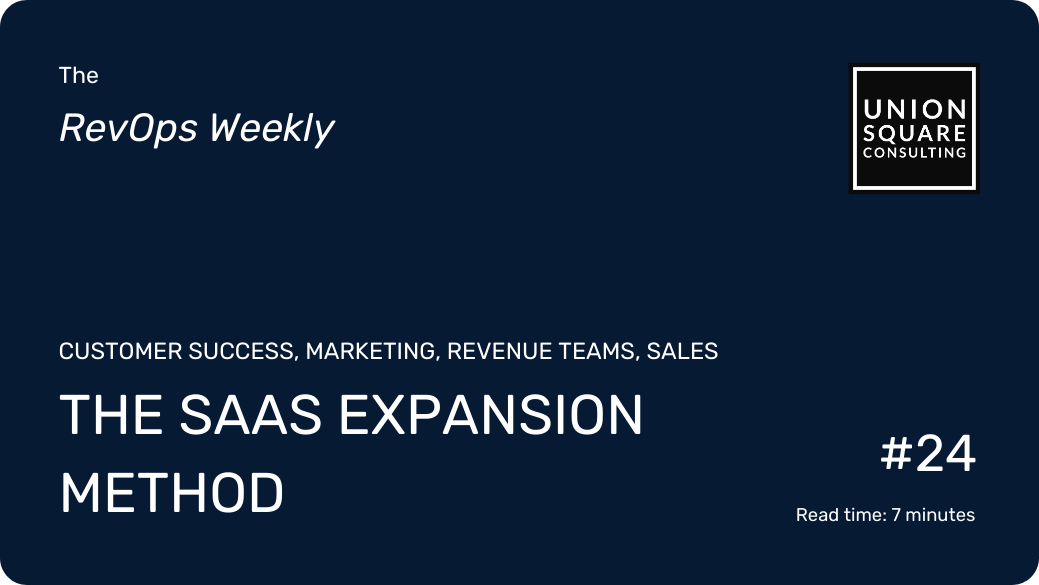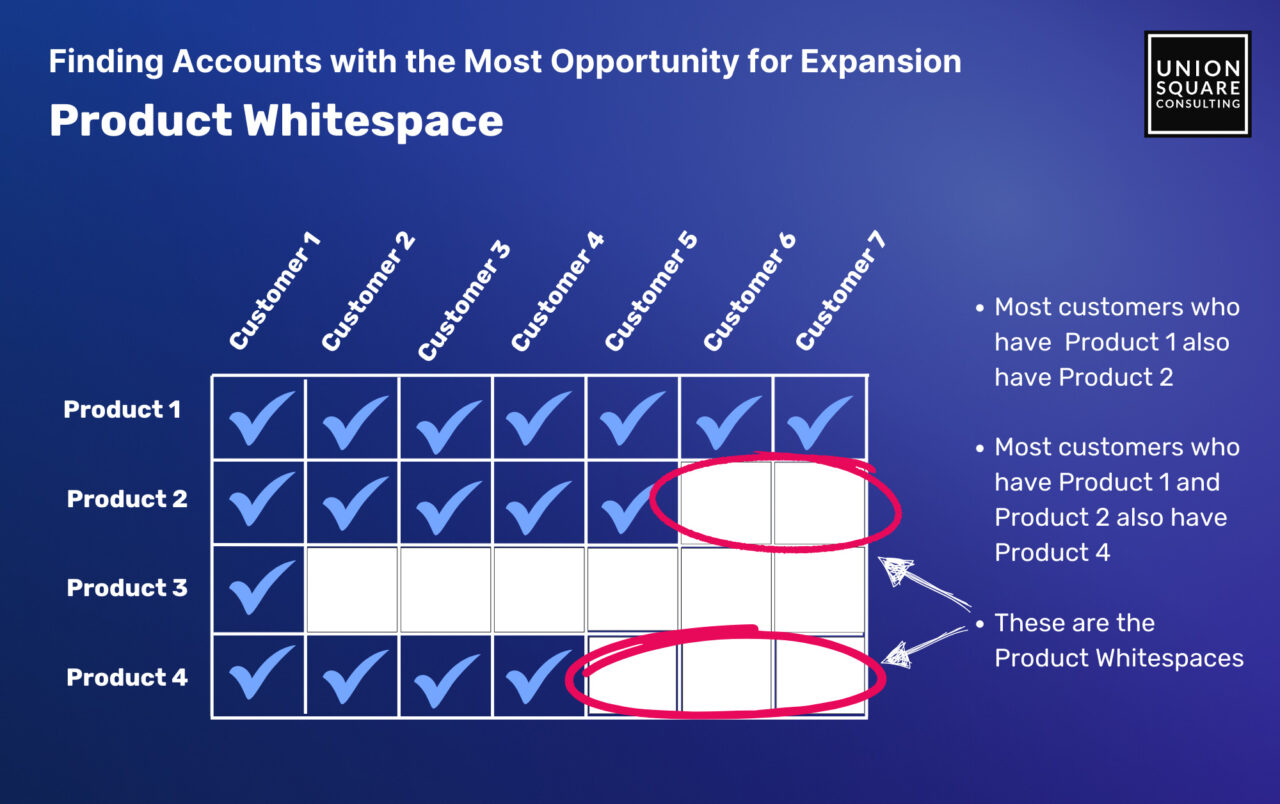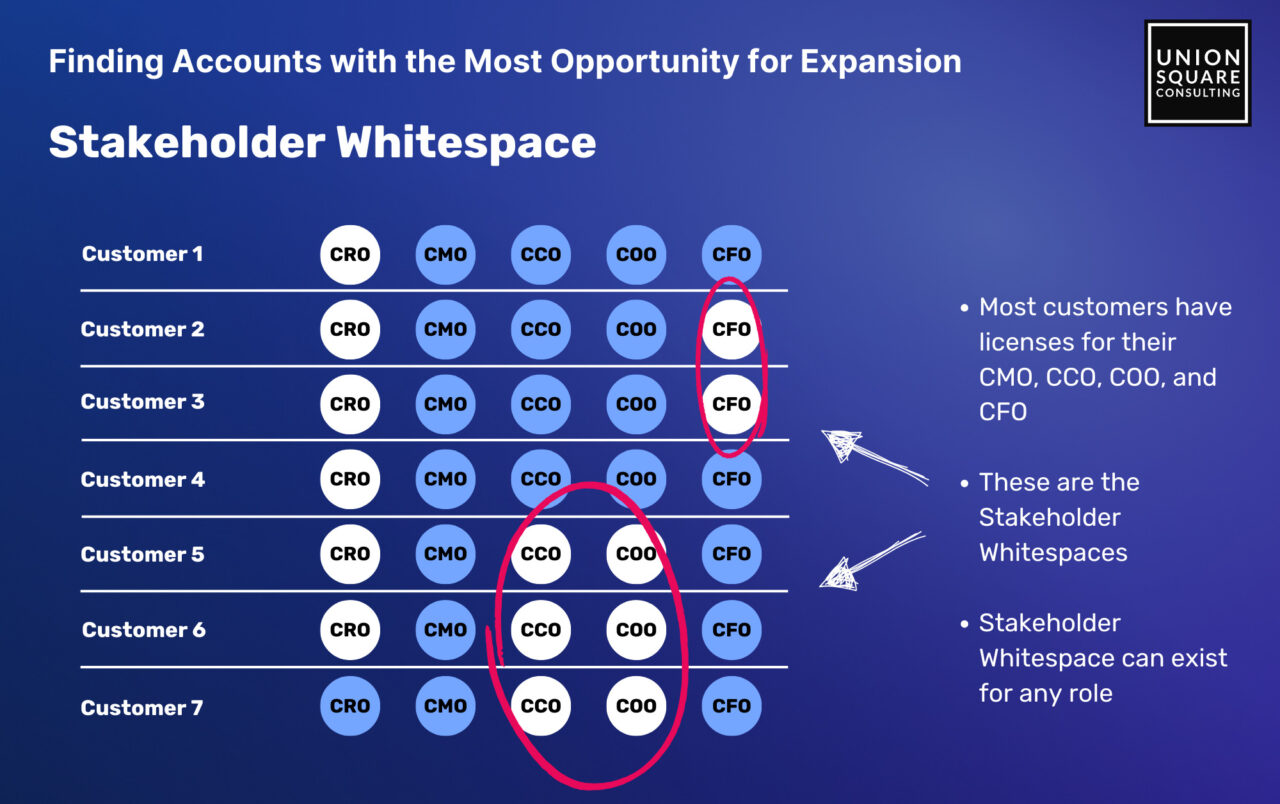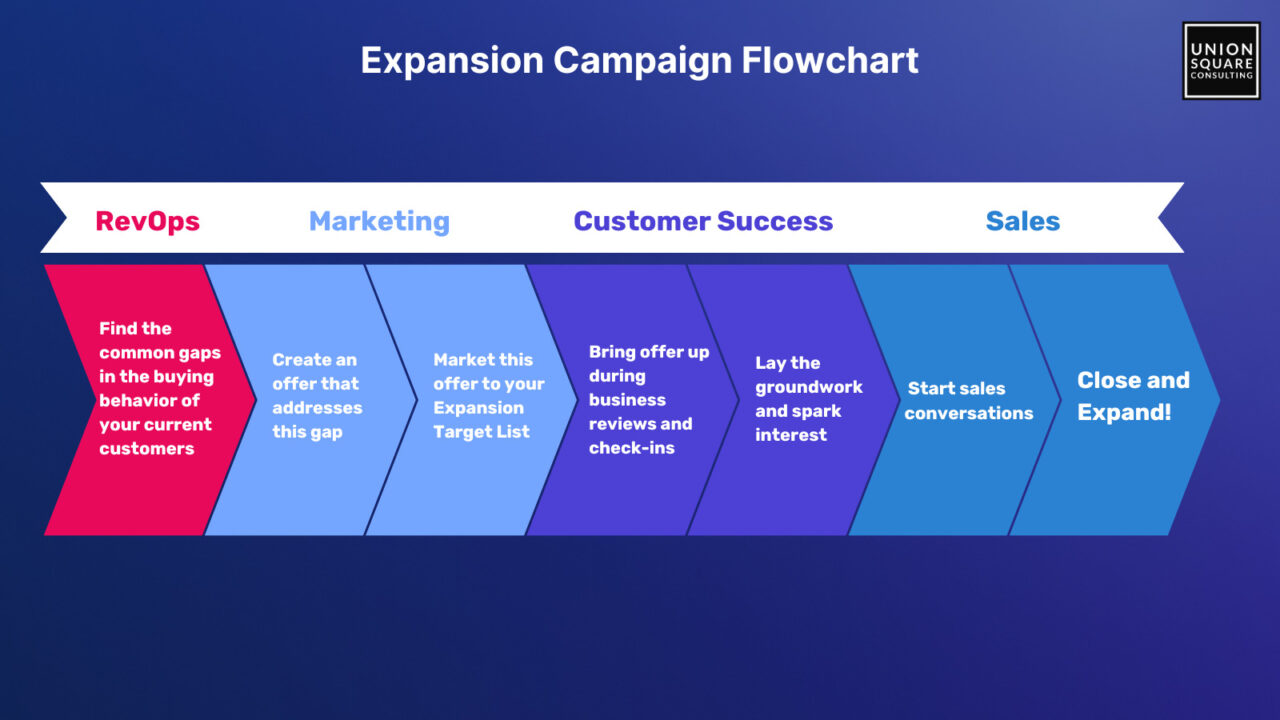
The SaaS Expansion Method
Read time: 7 minutesToo many SaaS companies base their revenue strategy on acquiring new logos – while one of the easiest paths to revenue growth is right under their nose!
Finding expansion opportunities.
These are opportunities to sell more products to an existing customer.
ChartMogul’s 2023 SaaS Growth Report saw that the companies with the highest ARR also had the highest percentage of revenue that came from expansion. It’s no coincidence: If you want to grow, you must be upselling or cross-selling (i.e., expanding) your existing customer base.
Current customers make the best customers because:
- They’re already qualified (of course)
- They cost less to acquire
- They’re easier to sell to
According to Paul Ferris in Marketing Metrics: The Definitive Guide to Measuring Marketing Performance, the success rate of selling to an existing customer is 60-70% – while the success rate of selling to a new customer is only 5-20%.
But how do you actually execute an expansion strategy?
Before All Else, Ideal Customer Profile
The first step is critical.
Go back in time a few years and make sure you’re selling to the right customers.
If we haven’t yet figured out time travel by the time you read this, your next best option is to define your Ideal Customer Profile now and start selling them the right products going forward.
It always surprises me how many companies haven’t defined their ICP yet. If this is you, I recommend putting a pin in this newsletter and tackling that first. It’s a step that will help you with… well, pretty much everything you do in your business.
Assuming you’ve been diligently selling to your ICP, the next thing to do is figure out where the best expansion opportunities are.
It’s worth noting that to do this effectively, you need to have a product set that lends itself to upselling. If your customer buys one thing, and that’s all they’ll ever need, there’s no upside to buying more. (This is the reason license/seat-based pricing exists!)
Identifying The Best Expansion Opportunities
There are two plays when it comes to finding targets for expansion:
- Product Whitespace: Sell other products
AND/OR
- Stakeholder Whitespace: Sell more licenses
These expansion strategies can either be employed together or on their own. The concept of Whitespace is simply about finding the stuff your customers haven’t yet bought that other customers like them already have.
It’s easier to do than you might think! Here’s how…
Product Whitespace
You can’t sell more to companies that have already bought all of your products. What you want to look for are companies that look like the companies who have bought all your stuff, but haven’t yet. These gaps in buying behavior are called Product Whitespace, and that’s where you want to attack.
Find the typical customers that buy Product A, and find what other products they usually buy. If many of your customers that buy Product A also buy Product B, your expansion targets are going to be the Product A customers that haven’t yet bought Product B.
In the diagram below, our expansion target list would include Customer 5, Customer 6, and Customer 7. Since there’s no buying pattern for Product 3, we can assume that selling this product will take more time and effort than Products 2 and 4. This makes it easier to prioritize the focus of our campaign for efficiency.
Stakeholder Whitespace
If Product Whitespace is about finding new products to sell to the same people, Stakeholder Whitespace is about finding new people in an existing customer organization to sell the same products to.
If you work for Salesforce and you’re trying to expand an organization, you’re looking for people who don’t have licenses yet. Your Stakeholder Whitespace could be everyone in your customer’s Finance department who isn’t yet using Salesforce.
Keep in mind that the individuals in your Stakeholder Whitespace may not be the actual people on your expansion target list. You want to target the decision makers that would allow you to sell these extra licenses, with that Whitespace in mind.
Whitespace Overlap
If you have a customer that hasn’t yet bought all of the products that other customers like them usually buy, AND doesn’t yet have licenses for all of the stakeholders that other customers like them usually have licenses for, you’ve hit the expansion jackpot. This is called Whitespace overlap.
Now you have both a product build-out opportunity and a cross-departmental/buyer persona opportunity. If you have enough of these opportunities, this is the area you want to put your focus on.
Ideally, you’ll have plenty of Whitespace overlap. But there doesn’t have to be overlap to create a lucrative expansion campaign.
You may want to narrow this list down further based on:
- The best accounts with the most opportunity to expand
- These may or may not be your biggest accounts
- The accounts with the best usage rates
Coordinating Your Expansion Campaign
From this point forward, your expansion campaign is going to be nearly identical no matter which targeting strategy you use. And every department – RevOps, Marketing, Sales, and Customer Success – has a role to play in the success of your campaign.
- RevOps will find the gaps in the buying behaviors of your customers (the Whitespace exercise we described above)
- Marketing creates an offer that addresses the Whitespaces you’re going after
- Marketing markets this offer to the individuals on your list (since you know exactly who you’re targeting and why, your messaging should be laser-focused)
- Customer Success brings the topic up in future interactions with these decision makers, such as quarterly business reviews or check-in calls
- Sales start sales conversations with decision makers once the groundwork has been laid and interest is sparked
Yep, It Can Be That Easy
You can’t go in blindly trying to sell more to every existing account. It’s inefficient, pushy, and potentially damaging to some customer relationships.
By following these steps, you lead with the needs of your customers, not the needs of your business.
This creates a more targeted process for your team, a more genuine experience for your customers, and overall better results.
TL;DR
- Expansion opportunities are the easiest (and cheapest) way to grow your revenue
- First, ensure you’ve been selling the right products to the right market (your ICP)
- Make a target list by analyzing:
- Product Whitespace: Customers that haven’t bought all of the products that customers like them usually do
- Stakeholder Whitespace: Individuals at these companies that don’t have the product licenses that people like them usually do
- Develop your campaign:
- Create and market an offer to this list
- Discuss the offer during routine interactions
- Once the seed is planted, have your sales team start a conversation
When you’re ready, here’s how we can help:
Get a Free 1:1 Revenue Efficiency Workshop
Get one of our Senior Revenue Strategists to yourself for 1 hour and leave with a plan to increase the money-making power of your go-to-market operations.
Hire Us!
Bring us on as your Strategic RevOps Team and realize the growth potential of your revenue engine. There are 3 ways to work with us.
Get more tips like these, sent right to your inbox.
Subscribe for fresh, relevant revenue growth tips delivered every week.




